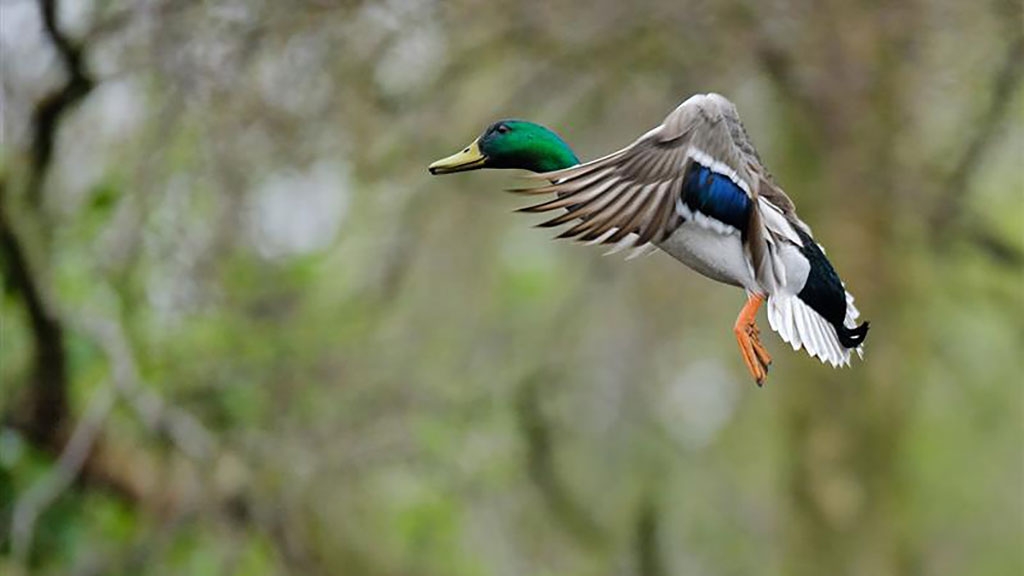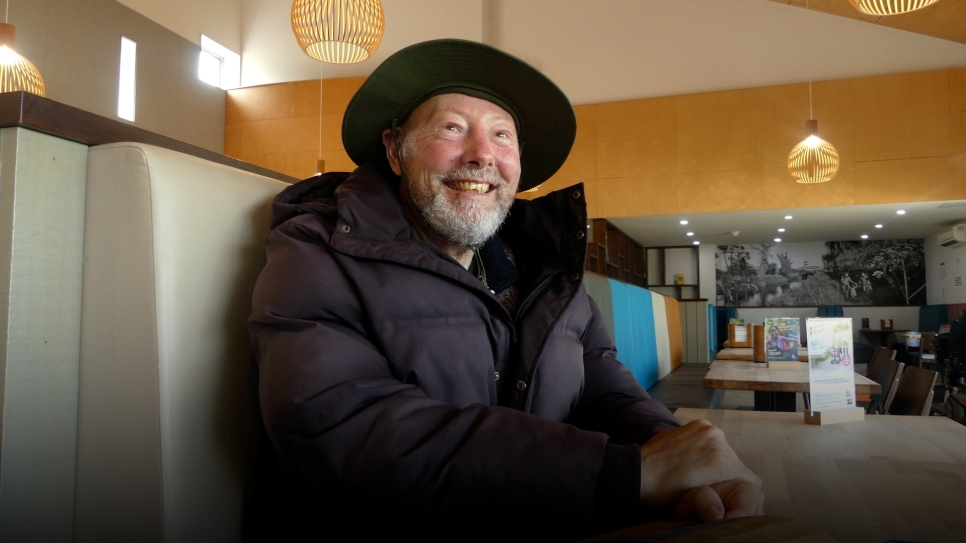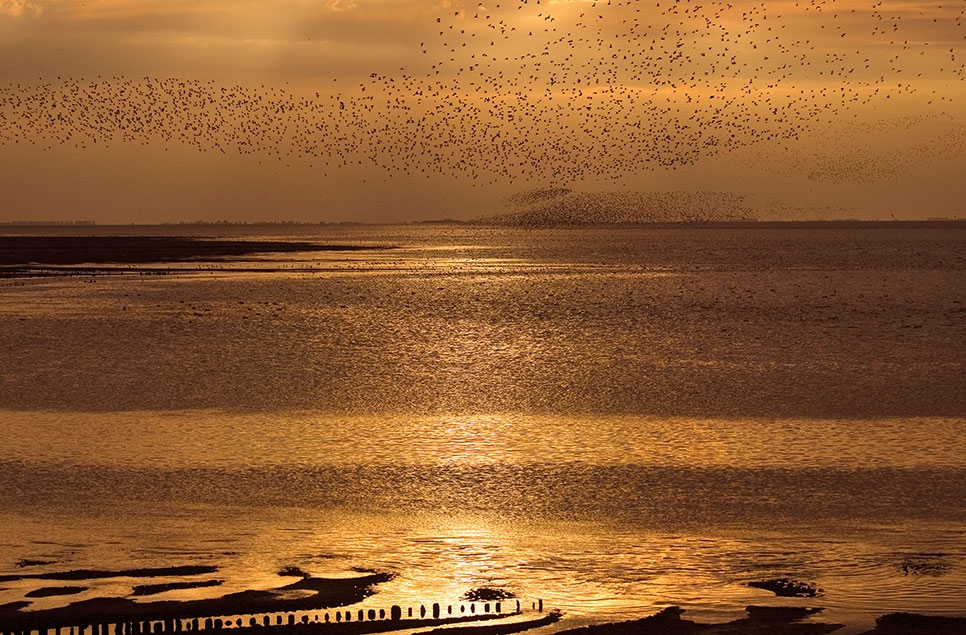Floating islands launched to help scoters

Artificial islands made of redundant materials from fish farms have been floated at two Scottish lochs as safe nest sites for common scoters.
Common scoters are one of the UK’s rarest breeding birds. They nest at just a small number of Scottish lochs.
Research into their breeding success by WWT over the last few years found that nests on the shore were at risk from ground predators. Although scoters that nested on existing islands could initially be safe, fluctuating water levels often reconnected the islands with the shore making them similarly exposed.
The floating islands should protect nests from both.
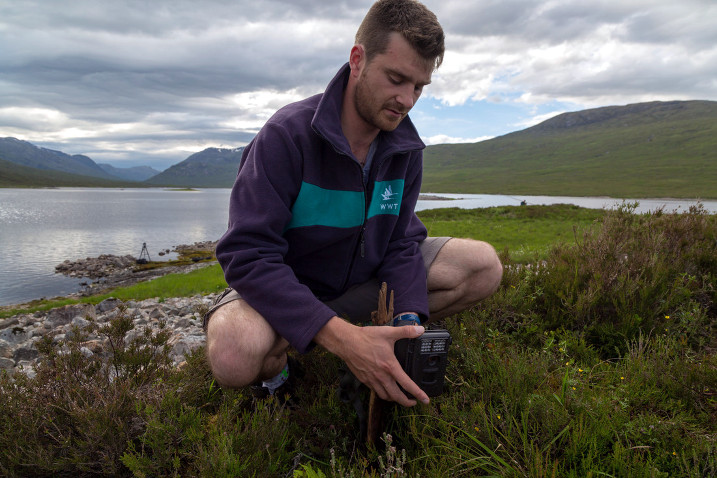
WWT's Ed Burrell setting a camera trap to study common scoters
WWT researcher Ed Burrell said,
“It’s great that the scoters now have the option of the floating rafts. Each summer we see some scoters nest on islands in these lochs, only to find themselves exposed by falling water levels. If the rafts give just one or two nests the chance to succeed that will make a difference to these endangered birds.”
The effort to save the scoter has brought together a diverse partnership from industry and conservation charities including Scottish and Southern Energy, Forestry Commission Scotland, Scottish Natural Heritage, Blue Energy, the Ness & Beauly Fisheries Trust, RSPB and WWT. To create the floating islands, the partnership group joined forces with Fusion Marine and Marine Harvest.
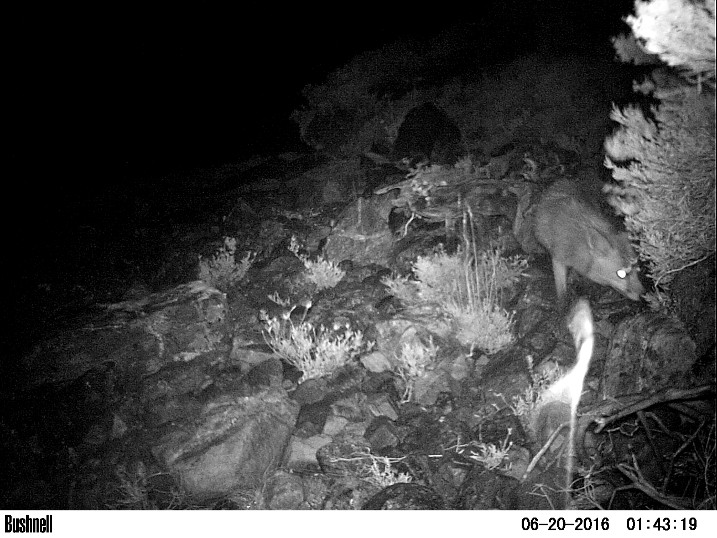
A fox raiding a scoter nest on an island exposed by falling water levels
RSPB Scotland’s Dr Alison MacLennan said,
“Within the last forty years the population of the now inappropriately named Common Scoter has fallen from several hundred pairs, with a wide distribution over the north and west of Scotland, to around fifty pairs found in a few isolated lochs. We are in real danger of losing this lovely bird as a breeding species in Scotland and I am delighted that this partnership has come together to help provide them with a future.
“Floating islands have been very successfully used to boost productivity of black-throated divers for many years, but since divers tend to nest close to the water’s edge, a small island was perfectly adequate. Common scoters have a very different approach to selecting their nest sites, requiring dense vegetation to provide a secluded site that they approach from the air. We were conscious that we would have to provide a larger area of nesting habitat for scoters than for divers. That would require a much larger island which would also have to be more robust to withstand the effects of wind, ice and the flexing of the water. We are delighted with the rafts constructed by Fusion Marine and can only hope that the common scoters share our enthusiasm!”
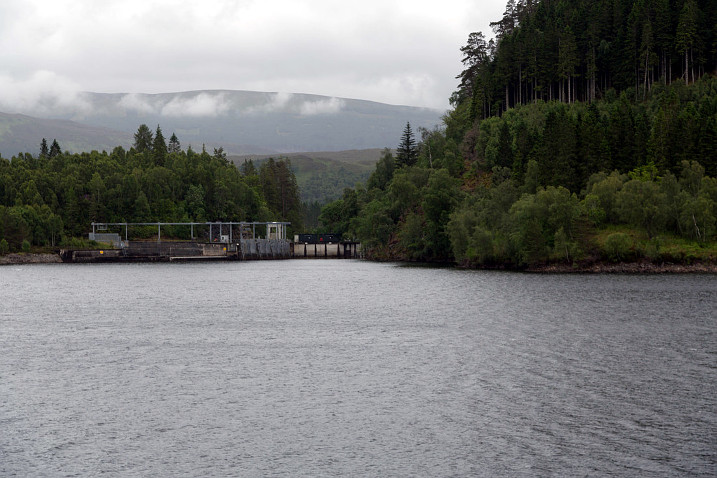
Hydro power dams can cause water levels to fluctuate on lochs where scoters breed
Arthur Campbell from Marine Harvest said,
“We are delighted to support this project and particularly since the rafts have been constructed using materials recycled from some of our marine fish farms. The ducks may have come across the black pipes in their previous use as the walkways around fish farm cages at sea but we are hoping that they will take a second look at them now that they are disguised as heather clad islands.”
Alastair Stephen, SSE’s Freshwater Fisheries Biologist said,
“Generation of power from the large hydro reservoirs in our glens is an important part of our contribution to the national grid, but we don’t wish to see our wildlife adversely impacted in the process. The provision of floating islands as potential nest sites will, we hope, provide more secure nest sites in situations where the drawdown of water for hydro generation can leave islands connected to the shoreline and therefore accessible to mammalian predators. In addition, the floating island vegetation should be less affected by spates and inundation that can damage the growth of vegetation essential for giving cover to the incubating ducks.”
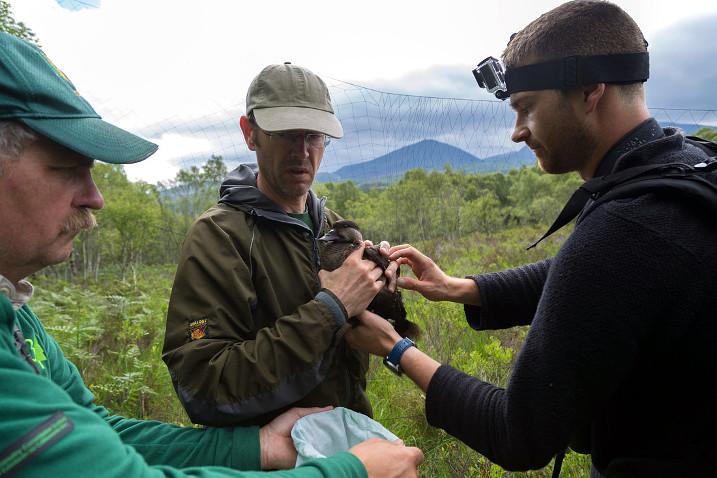
Kenneth Knott from Forestry Commission Scotland, helping WWT's Carl Mitchell and Ed Burrell with common scoter research
Kenneth Knott, Forestry Commission Scotland Environment Manager said:
“We have been lucky to have been able to combine unwanted materials from Marine Harvest with the expertise of Fusion Marine who have built these extremely versatile islands out of recycled polyethylene sheeting and flotation pipes using their specialist electro-fusion welding technology. The rafts have been covered with turf cleared from ground works nearby so that they now look to all intents and purposes like a natural island.”
Scottish Natural Heritage’s Derrick Warner had been a key driver in the development of this project but sadly, due to his sudden and untimely death, he was not present to see the rafts anchored in place recently.

